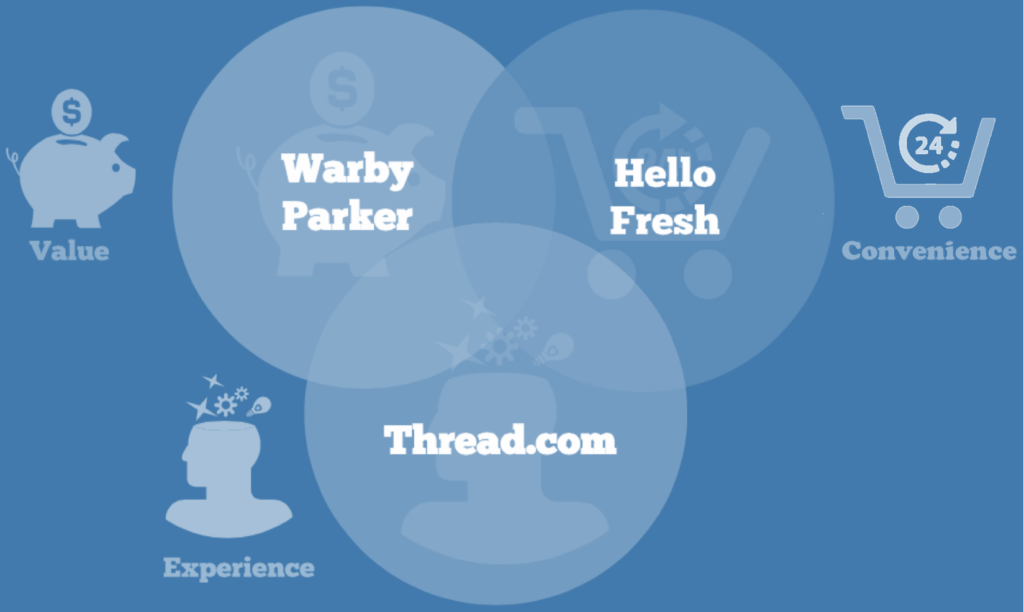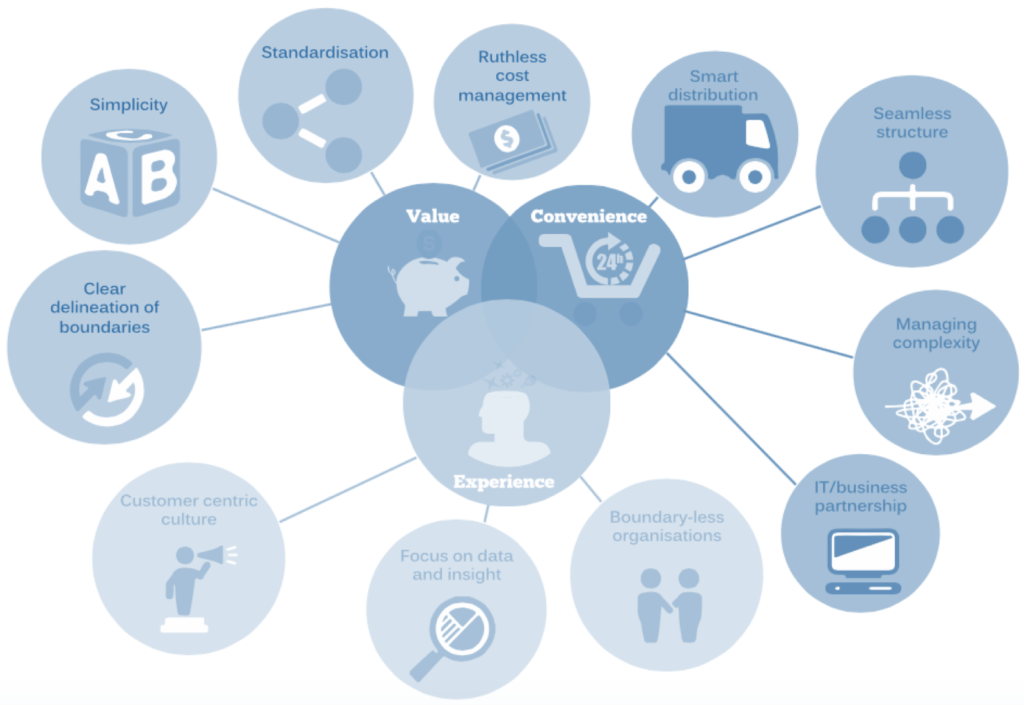As a strategy and planning consultancy we often have to analyse market trends, this includes the major shifts we have seen in the consumer & retail sector in recent years. KPMG Boxwood released a report earlier this year that highlighted the major disruptive trends that consumer businesses should be addressing: Value, Convenience and Experience.
“Today’s consumers are looking, above all, for value, convenience, and a unique experience. These three trends are driving disruption to existing markets and business models on an unprecedented scale. Retailers who fail to respond to these trends are being punished — often severely. Retailers who deliver on one or more of these trends, however, are being rewarded — often handsomely.”
The report looks at three case studies successfully delivering on each area. The cases are; Warby Parker (established 2010), HelloFresh (established 2012) and Thread. com (established 2012), all of which have enjoyed rapid growth and snatched market share from incumbents on the back of a new approach and new choices for consumers.

 Disruptive Influence 1: Value
Disruptive Influence 1: Value
“Successful value retailers, however, are far from one-trick ponies. Buying decisions are often complex and involve a balance of quality, function, style and brand considerations versus our willingness to pay.”
KPMG Boxwood notes how the recession pushed consumers towards discounter retailers, who have since all grown in market share. They identify 4 characteristics that value disruptors share:

- Ruthless cost management
- Simplicity
- Standardisation
- Clear delineation between global and local boundaries
For a case study on value disruption, the report examines Warby parker – the designer eyewear online retailer that sells glasses significantly cheaper than competitors. They do this through tight control on costs and supply chain. Warby Parker has leveraged their product to build a customer experience and relationship that perfectly aligns with their market.
 Disruptive Influence 2: Convenience
Disruptive Influence 2: Convenience
“Bombarded by demands on their time and attention, modern consumers are more time-poor than ever. As time becomes an increasingly precious commodity, saving it becomes even more important.”
When examining the consumer trend of convenience, the report highlights the importance of omni-channel interaction in shopping and recent logistical innovations that have brought many stores closer to home. Consumers now expect a seamless ’anytime, anyhow, anywhere’ shopping experience — and if they don’t get it, they will go elsewhere.
The report identifies these areas that convenience disruptors are focusing on:
 Seamless channel strategies
Seamless channel strategies
- Close proximity
- Smart, fast and reliable distribution
- Range & Choice – one stop shop for everything
- Ease of transaction
The convenience disruptor case study examines Hello Fresh – a subscription-based online food retailer that targets affluent customers with busy lifestyles. Hello Fresh makes shopping for and cooking food simple by delivering the required ingredients (chosen by the customer online) to your door stop. They focus on providing a user friendly customer experience and a large range of ingredients through effectively managing suppliers and forecasting demand in recipes.
 Disruptive Influence 3: Experience
Disruptive Influence 3: Experience
“Customers want experiences that are tailored, even personalised, for them and provide a relevant and valuable experience that is worth paying (often a premium) for.”
The report examines ‘Experience’ as the final consumer trend, identifying how consumers now look for an experience that is personalised and with an emotional connection. The report states how a personal approach demands firms to get to know their customers deeply. The result for a firm that can build the right personal relationship, is long standing customer loyalty.
 KPMG Boxwood provide these key areas for Experience disruptors to focus on:
KPMG Boxwood provide these key areas for Experience disruptors to focus on:
- Customer centric culture
- Focus on data and data-driven insight
- Boundaryless organisations
The report looks at Thread as case study for experience disruption. Thread is a free digital styling service for men, that are time-poor and shopping-averse. They have blended both They have blended both human touch (personal stylists) with digital (data and algorithms) to create a scalable business offering mass personalisation. It uses data to provide highly personalised style/clothing recommendations based on information you provide- the more information you provide the more personal it gets.
Conclusion
The retail sector is more challenging now than it has ever been. The old rules no longer apply and the rate of change is dizzying. Value, convenience and experience are the key drivers of consumer purchasing decisions and businesses that do not excel in one or more of these disruptive trends will struggle to survive, let alone grow.
However retailers respond to the disruptive influences of value, convenience and experience, neglecting to respond is not an option. To achieve any kind of sustainable growth — and increasingly, to ensure their survival — retailers must find ways to differentiate in at least one of these areas.

(All images courtesy of KPMG Boxwood)
KPMG Boxwood is an award-winning consultancy that specialises in the delivery of business transformation. Read their full report here.